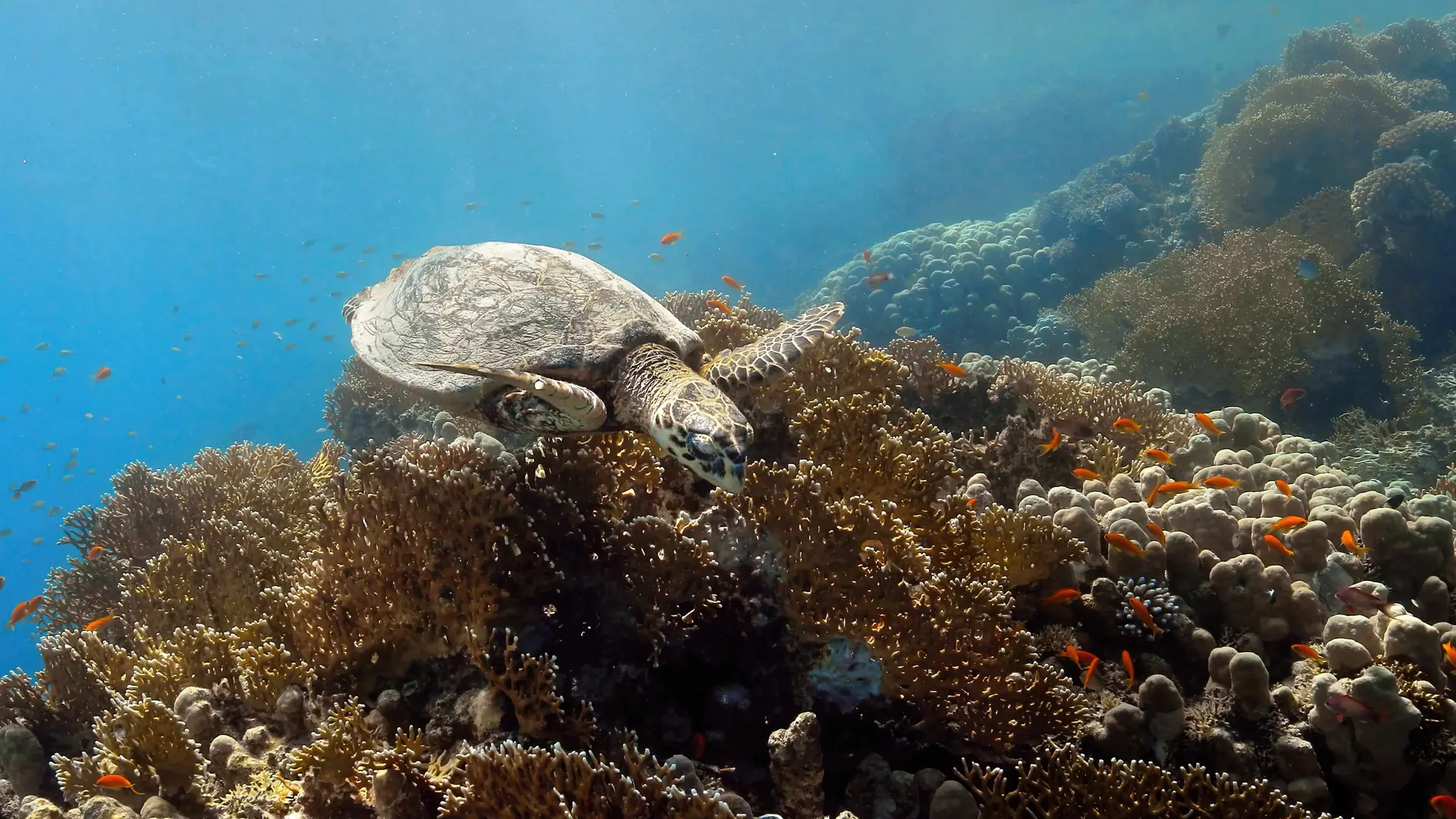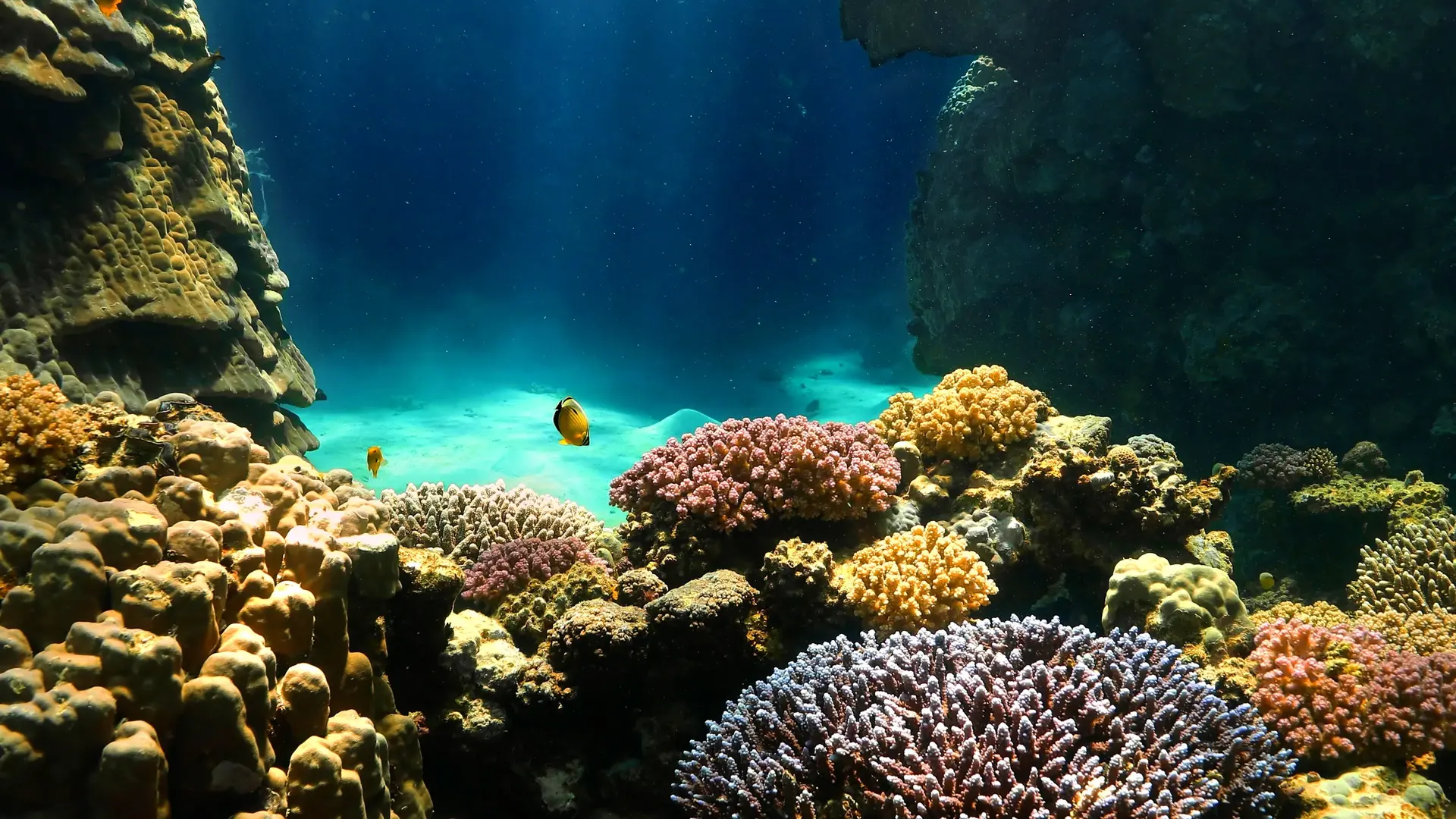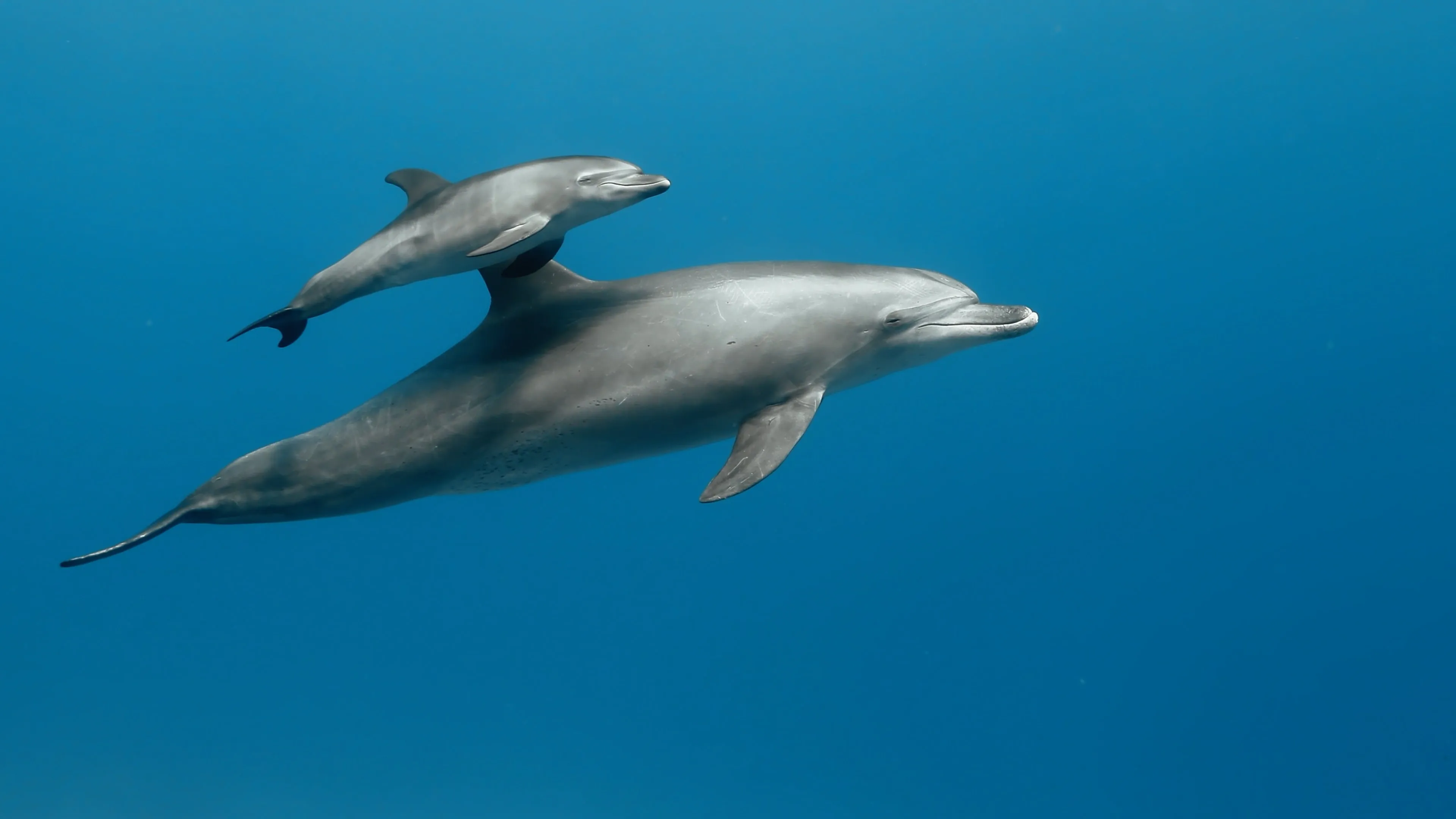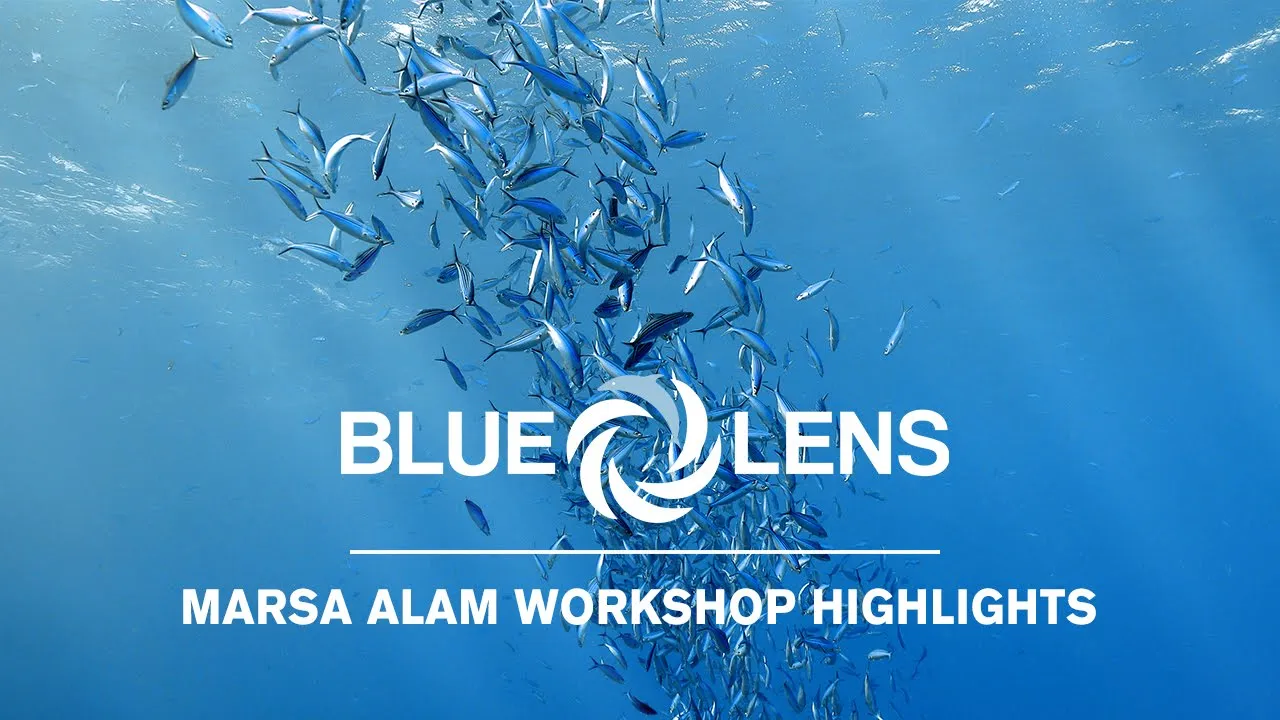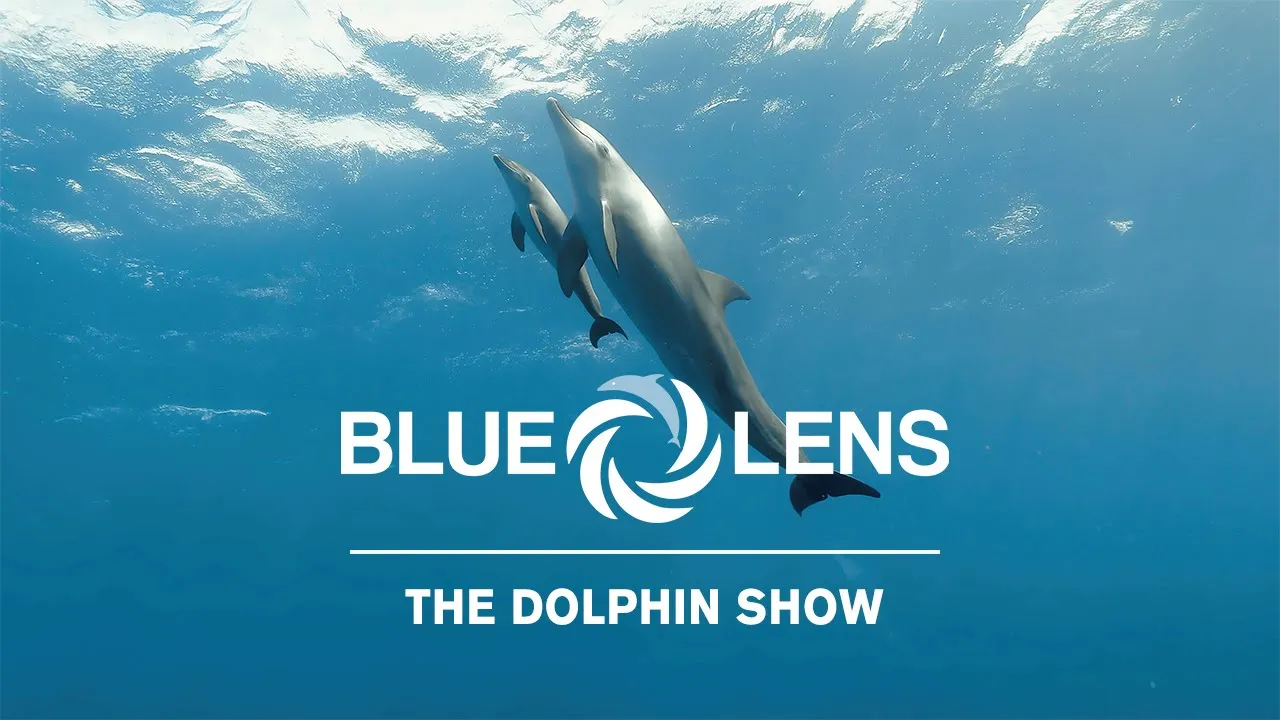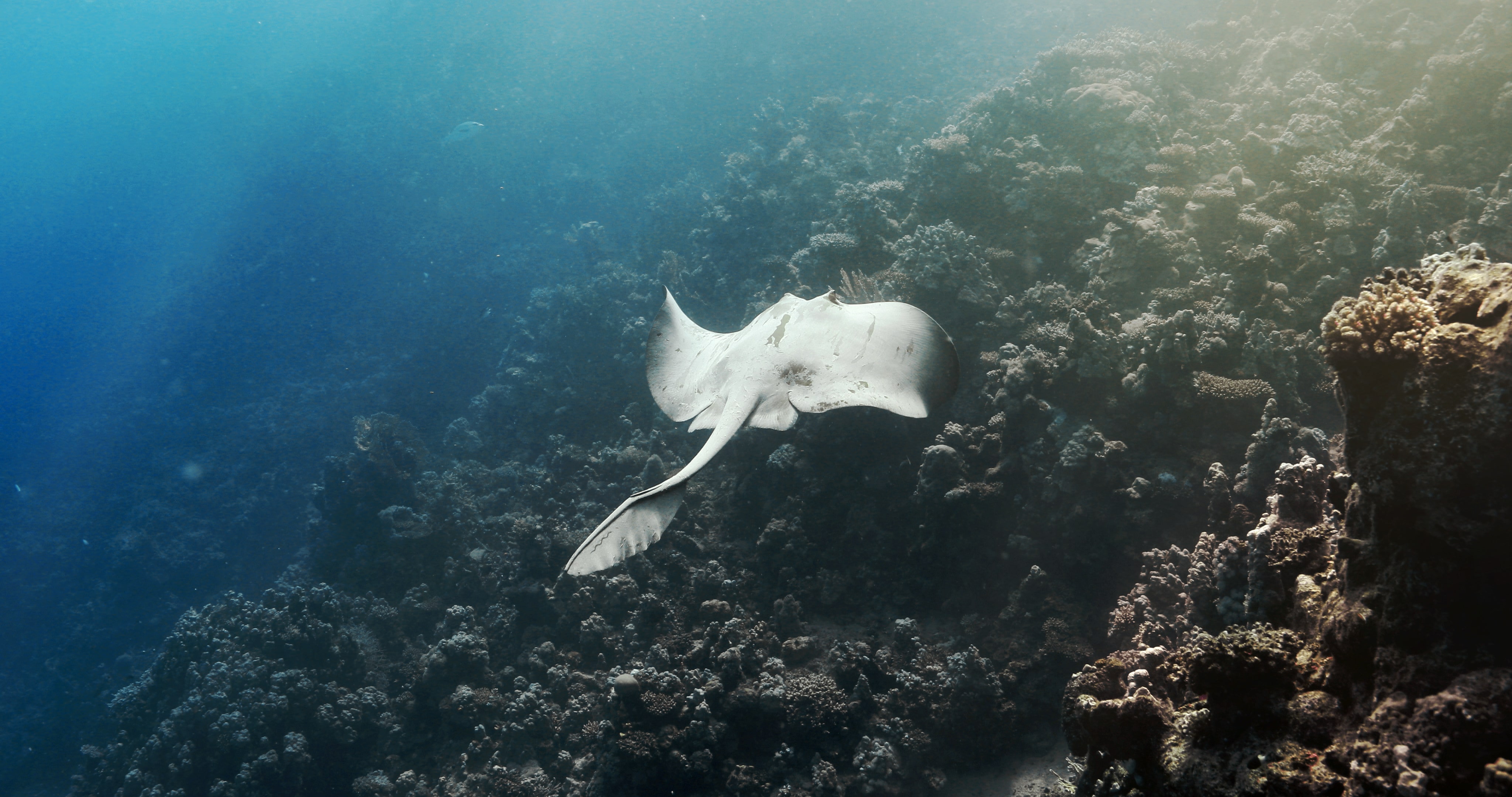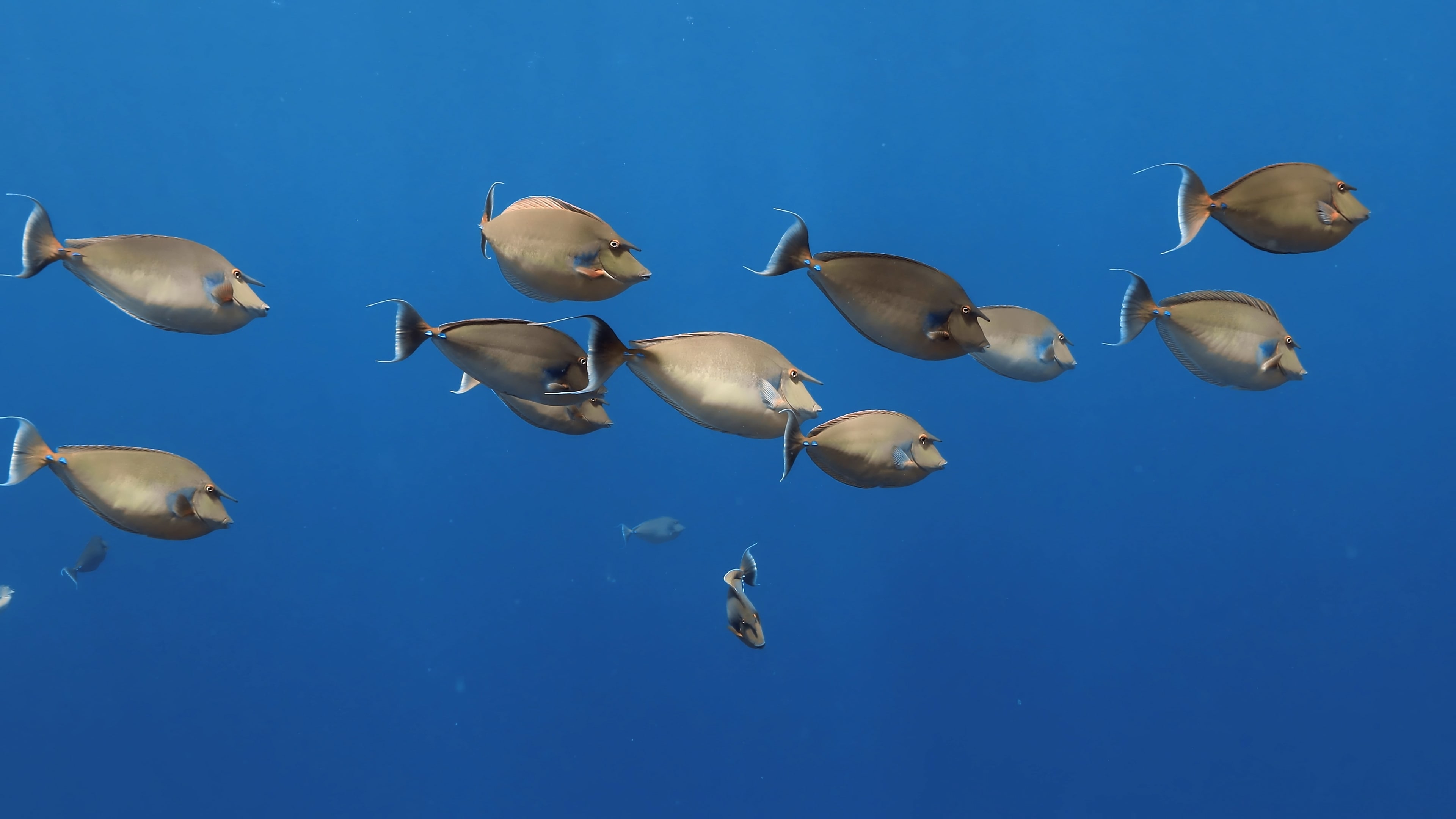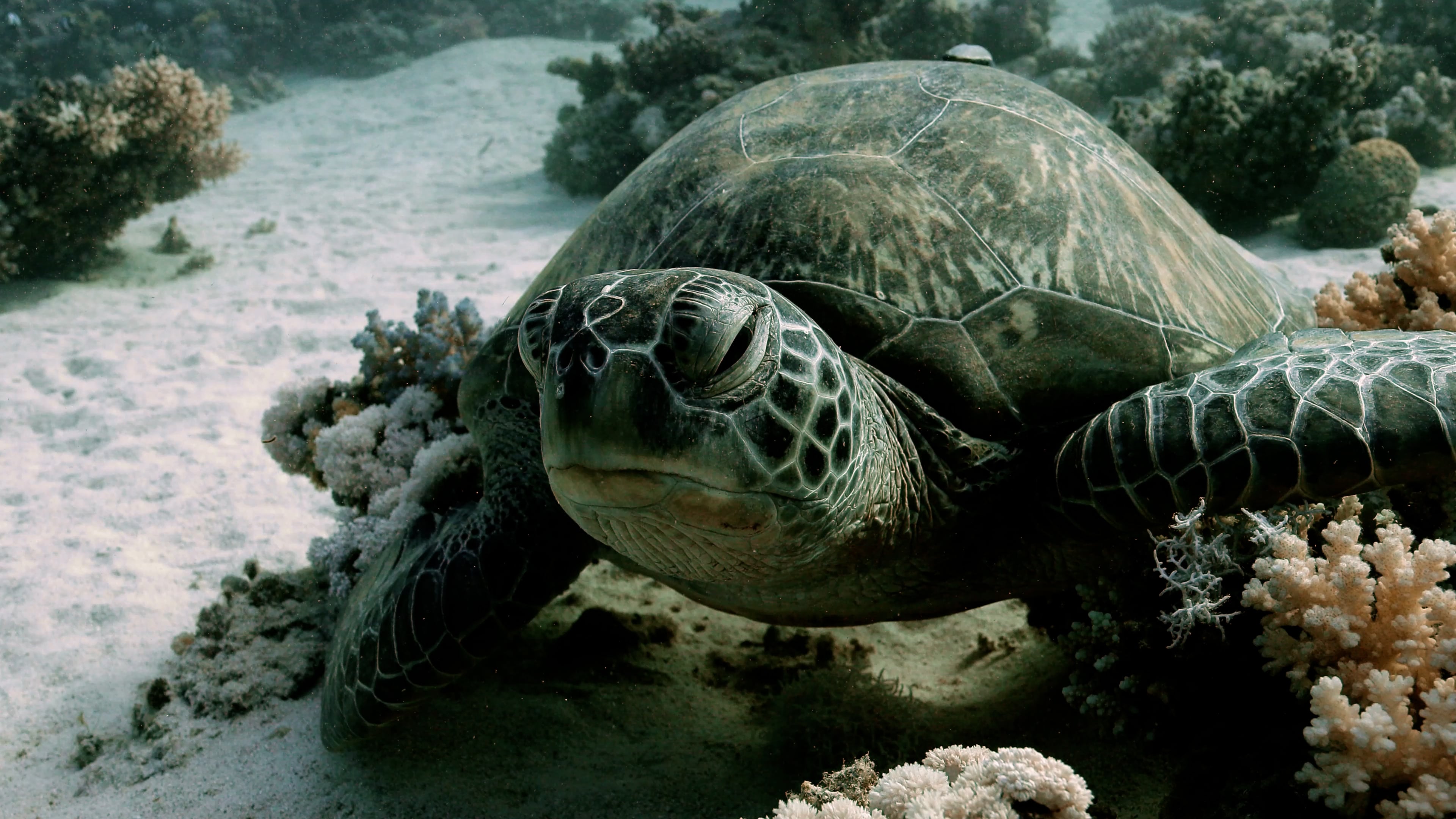Marsa Alam - Full Color
Dates
open
Date de début : 31/05/2026
Date de fin : 07/06/2026
Participants
Minimum de participants : 8
Maximum de participants : 12
Transports
Content
CONDITIONS POUR LA PLONGÉE
AOW / Niveau 2* et + 50 plongées
Nous vous remercions de bien vouloir présenter vos certifications de plongée lors de votre arrivée
CONDITIONS SANTÉ
Un certificat médical de plongée datant de moins de 12 mois est requis pour participer à cet atelier.
Vous devez être en bonne condition physique et capable de réaliser jusqu’à 3 plongées par jour.
Guides
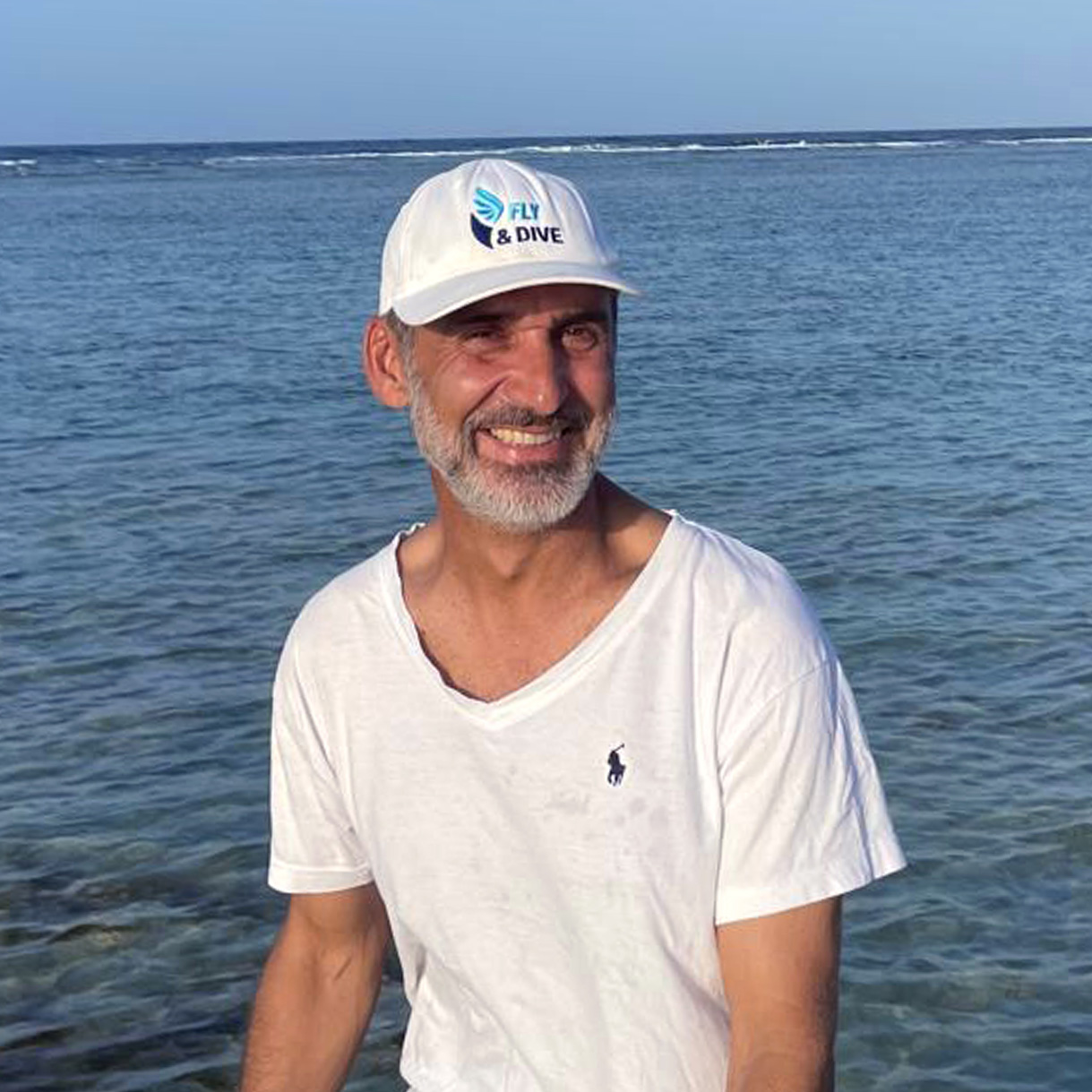
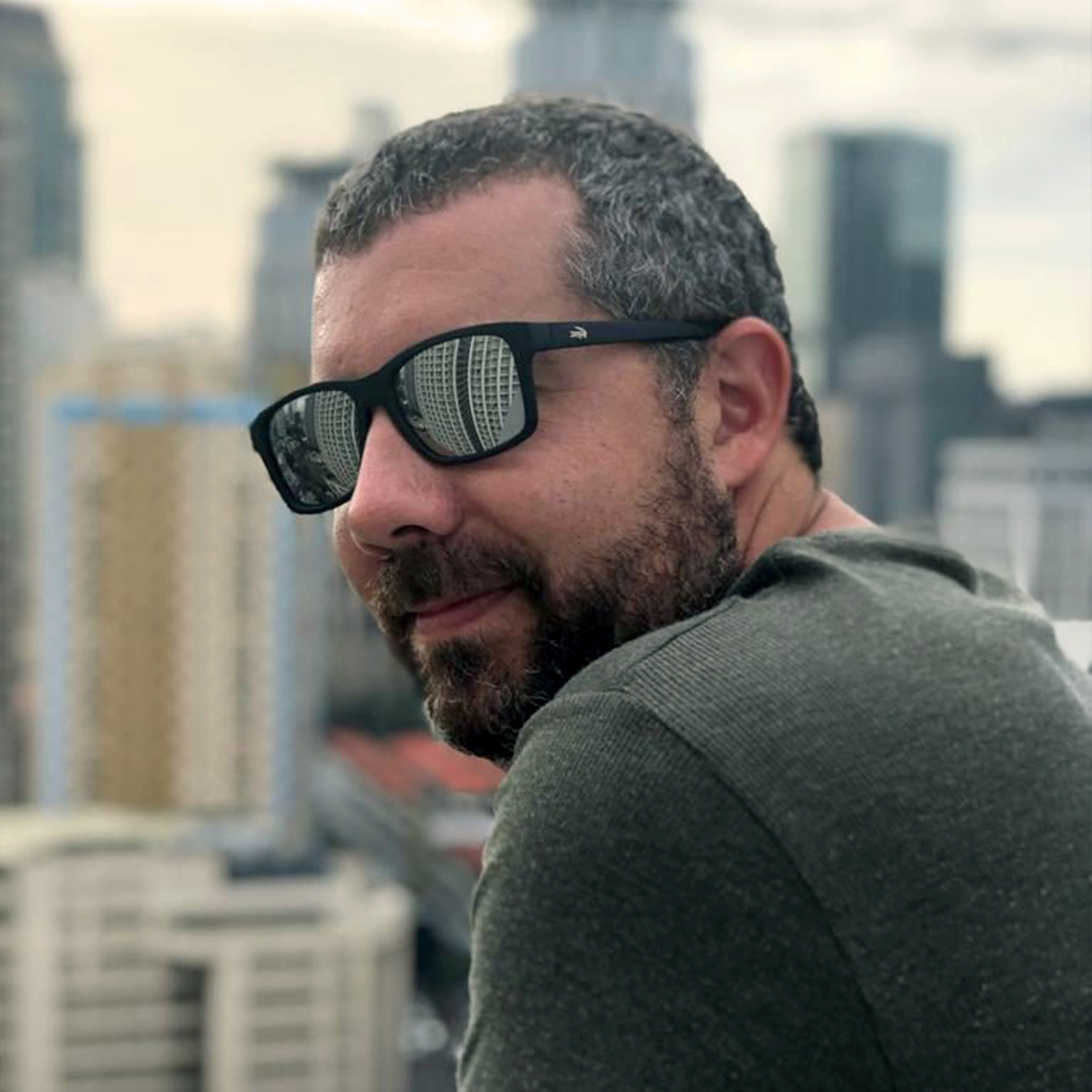
Prix et Info
INCLUS DANS LE PRIX
Transferts aéroport depuis/vers Marsa Alam ou Hurghada
14 plongées (bouteille et plombs uniquement)
Séjour dans un hôtel 4 étoiles (7 nuits*)
Petit-déjeuner - Déjeuner - Dîner - Collations - boissons non alcoolisées, eau minérale, bières, vins et spiritueux locaux.
Dîner de gala
Excursions en zodiac, speedboat et excursions
Nitrox GRATUIT
Coaching photo/vidéo avec Olivier Bourgeois & son équipe
Masterclass de post-production avec Franck Meyer (6 heures)
Accès gratuit à nos cours de postproduction en ligne
Des nuits supplémentaires sont possibles mais optionnelles, n'hésitez pas à nous contacter.
*PAS INCLUS DANS LE PRIX
Vol (aller/retour) vers/de Marsa Alam ou Hurghada (Égypte) | Assurance voyage et plongée | VISA (25$) | Équipement de plongée** | Équipement photo et vidéo***
**Sous réserve de disponibilité, vous pouvez louer un ensemble caméra + caisson. Pour plus d'informations, contactez-nous.
*** Location de matériel (6 jours) : Masque, tuba et palmes : 39€ | Gilet stabilisateur, détendeur ou combinaison (par pièce) : 42€ | Équipement complet (gilet stabilisateur, détendeur, ordinateur de plongée, combinaison) : 150€
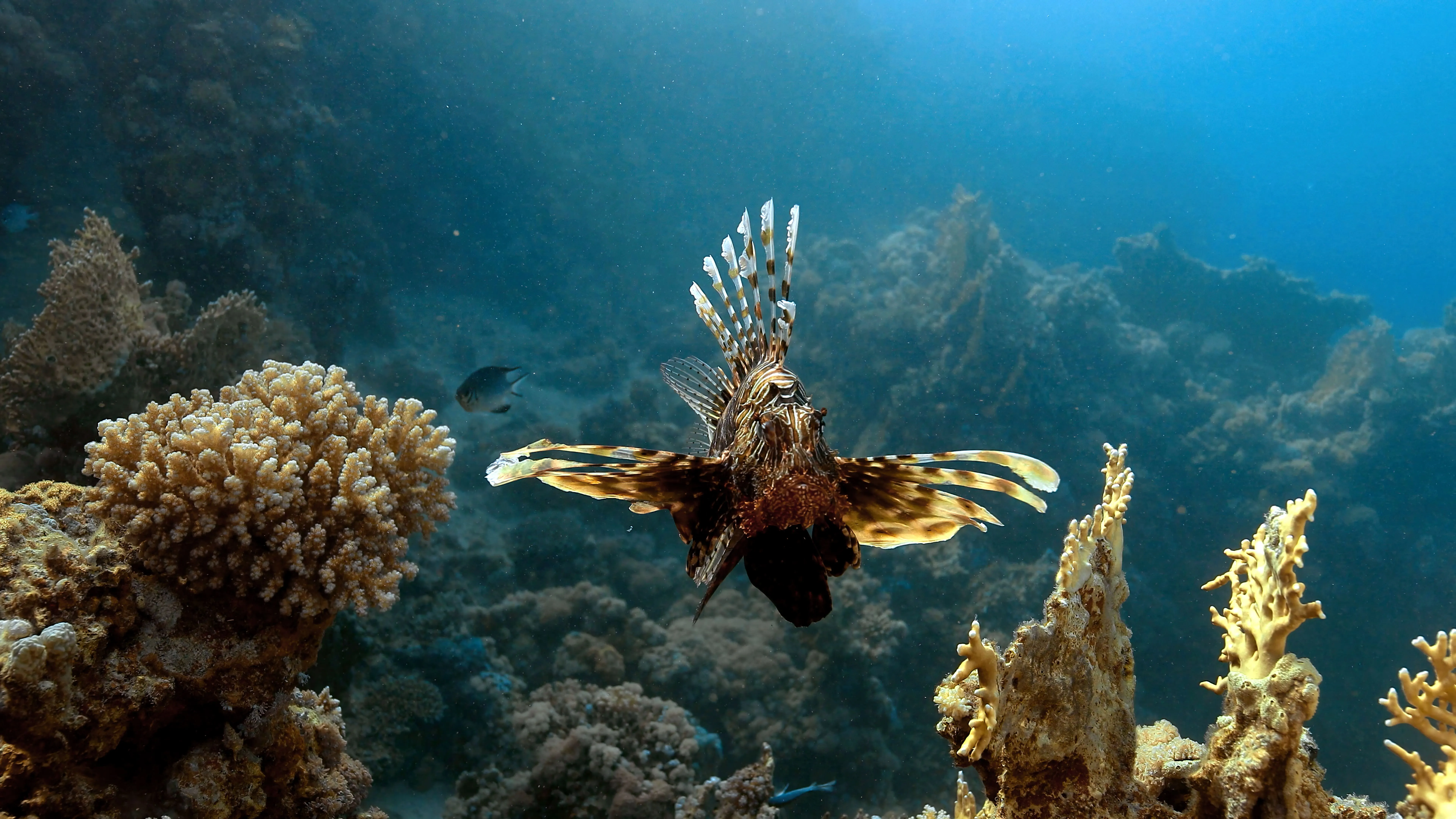
ÉGYPTE - SUD DE LA MER ROUGE – UNE OCÉAN DE COULEURS
Ce voyage plongée photo/vidéo sous-marine d'une semaine vous emmène découvrir les merveilles du sud de la mer Rouge. Bien sûr, de nombreux plongeurs et amateurs d'images connaissent la mer Rouge soit par sa réputation, soit parce qu’ils y ont plongé. Ses 2000 km de récifs coralliens (l'un des 3 plus grands au monde) regorgent d'espèces marines et sont parmi les grands « classiques » de la plongée sous-marine.
Le long de la côte sud, de Hurghada à Wadi Lahmy, des dizaines de milliers de plongeurs se pressent dans les centaines de centres de plongée, certains accueillant jusqu’à 200 plongeurs par jour. Nous avons déjà tous vécu ce type de situation: plus il y a de monde dans l'eau, moins il y a de chances de faire de bonnes images et d’observer les animaux.
Nous sommes d’accord, l'objectif de cet atelier n'est pas simplement de plonger en Mer Rouge, ni celle que nous avons décrite plus haut, ni celle que vous pourriez connaître : palanquée de plus de 10 plongeurs, snorkelers envahissants, guides débordés ou pressés d’en finir, plans de plongée répétitifs, sites de plongée surexploités où les groupes de plongeurs se succèdent à un rythme effréné, temps de plongée limité à 60 minutes et souvent moins si les niveaux des plongeurs ne sont pas pris en compte, sans même parler des courants, des marées ou de la position du soleil.
Comment prendre des photos ou des vidéos sous-marines de bonne qualité dans de telles conditions ? Compliqué ! C’est pourquoi nous avons créé un atelier unique qui répond à des critères bien précis, les nôtres : Petits groupes qui ne dépassent jamais, photographes ou vidéastes sous-marins, zodiacs et speed boat privatisés pour les sorties en mer, des plongées jusqu'à 90 minutes, planifiées pour des conditions naturelles optimales, les conseils d’une océanographe/biologiste marin pour anticiper le comportement animal, une station de nettoyage pour votre matériel photo/vidéo et équipement de plongée, une salle de post-production climatisée avec des ordinateurs puissants... Vous l’avez compris, cet atelier spécialement conçu pour les photographes et vidéastes sous-marin.
L'objectif est d'obtenir à la fois le plus spectaculaire de ce que la mer Rouge peut offrir et de vous mettre dans les meilleures conditions pour atteindre le sommet de la photographie/vidéo sous-marine, que ce soit techniquement ou artistiquement. Avec environ 900 espèces de poissons (14 % endémiques), près de 350 espèces de coraux, des grottes, des épaves, des pinacles, des couleurs fantastiques, des lumières douces et chaudes, la mer Rouge est un terrain de jeu extraordinaire pour la photographie et la vidéo sous-marines. Avec des conditions naturelles optimales presque toute l'année et une telle biodiversité marine, très peu d'endroits au monde peuvent véritablement rivaliser. Tout comme nous, la faune marine a besoin d'oxygène pour vivre. La solubilité de l'oxygène dans l'eau augmentant lorsque la température diminue, les chances d'observer des animaux aquatiques à faible profondeur sont considérablement accrues dans les eaux plus froides.
Après avoir passé quelques années à sillonner la Mer Rouge, parfois plusieurs mois par an, nous sommes arrivés à la conclusion que les mois de Mai et Juin sont de loin la meilleure période de l'année pour cet atelier : la température de l'eau oscille entre 22° et 24° Celsius, les eaux sont cristallines, les lumières fantastiques et nous avons la possibilité d'organiser des sorties en zodiac et speed boat quotidiennement.
Notre routine quotidienne
Ce stage de photo/vidéo sous-marine n’est pas une semaine de vacances. Nous commençons tôt le matin avec un briefing sur la vie marine, les conditions naturelles et les sites de plongée, la préparation du matériel, puis le départ en zodiac, hors-bord ou minibus pour des sorties plus éloignées. Chaque jour, nous effectuons 2 à 3 plongées. Peu après le déjeuner, nous entamons le débriefing des prises de vues sous-marines du jour, un coaching personnalisé, ainsi que des enseignements sur le comportement animalier. Nous nous adaptons quotidiennement aux conditions maritimes, au vent, aux marées, aux courants, mais aussi à la lumière et aux animaux marins. Certaines de ces conditions sont prévisibles, d'autres plus changeantes, c’est pourquoi nous ne suivons pas obstinément un programme prédéfini. La nature est notre meilleur guide et alliée. Si nos capitaines nous signalent la présence de dauphins à proximité, nous pouvons bien modifier nos plans, non ?
La visibilité, la lumière et les animaux sont nos guides.
Évidemment, personne ne peut vous garantir légalement que vous plongerez avec des dauphins, des requins, des tortues ou d'autres espèces marines. C'est pourquoi nous avons mis en place une organisation flexible qui suit toujours des règles très précises pour vous offrir un maximum de chances de faire des rencontres uniques et de capturer des images exceptionnelles. Que ce soit pour photographier ou filmer des animaux marins, la richesse des récifs coralliens, l’atmosphère dramatique des épaves ou les couleurs captivantes des paysages aquatiques de la mer Rouge, une bonne visibilité et un éclairage optimal garantissent d'entrer en salle de post-production avec des images brutes de qualité. C'est là que votre aventure prend une nouvelle dimension.
Exigences photographiques et cinématographiques
Pour profiter pleinement de ce stage, la maîtrise de votre propre matériel photo et des bases de la photographie/vidéo est un atout considérable. Si vous ne maîtrisez pas tous les réglages, Olivier Bourgeois et son équipe sont entièrement disponibles pour vous assister sur place. Le premier jour du stage, nous prendrons des photos ou filmerons sur le récif local pour revoir ensemble les bases techniques telles que la vitesse d'obturation, l'ISO, l'ouverture, etc., afin que vous soyez parfaitement préparé pour les jours suivants.
Sous l'eau, tout semble trompeusement plus lent, mais en réalité, vous n'avez que quelques secondes pour capturer la bonne image ou séquence vidéo. C'est pourquoi nous recommandons un appareil photo avec un autofocus rapide et efficace.
Un décor de western sous-marin
Ces 2000 km de récifs coralliens sont à la fois la ligne de vie et les poumons de cet écosystème résilient. Avec ses grands pinacles, ses canyons, ses grottes atmosphériques et ses couleurs coralliennes scintillantes, la mer Rouge offre des paysages marins grandioses et des lumières chaudes qui ont tout d’un décor de western sous-marin.
Ce qui m’impressionne le plus, en tant que cinéaste sous-marin, c’est le spectacle inégalable que nous offrent tous ces effets de lumière. Les bords des falaises, aux contours irréguliers sculptés par les vagues, changent la trajectoire de la lumière dans l'eau, la transformant en rayons magiques, presque divins, qui illuminent les paysages marins.
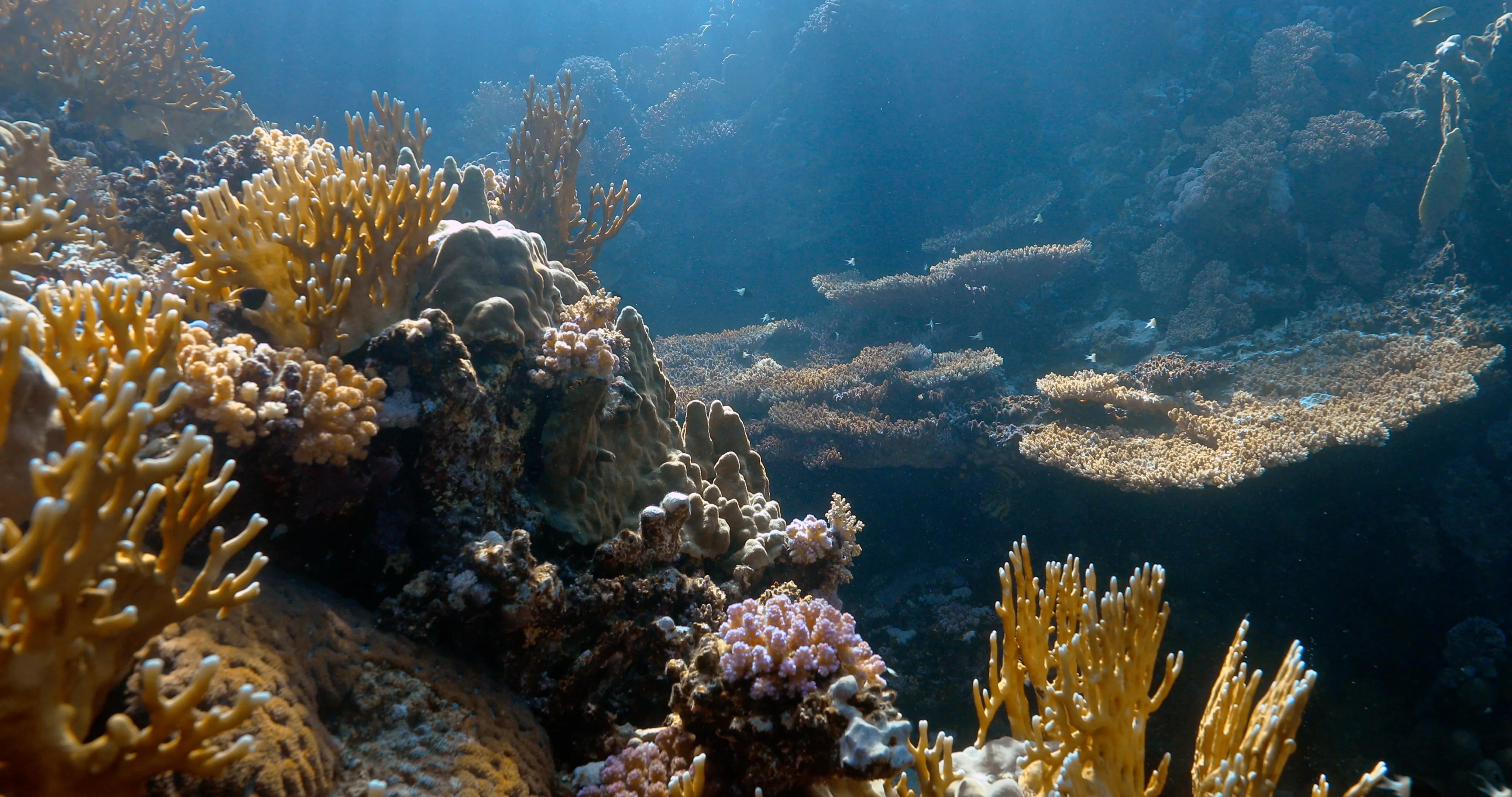
DES ESPÈCES RARES OU MENACÉES AUX ESPÈCES LES PLUS EMBLÉMATIQUES DE LA MER ROUGE
Dauphin à long bec de l'Indo-Pacifique (Tursiops aduncus)
C’est le cétacé que nous rencontrons le plus fréquemment lors de nos ateliers de photo/vidéo sous-marines en mer Rouge. La période de mai à mi-juillet est de loin la meilleure pour les filmer et les photographier en plongée. Comme c'est la saison des amours, ils sont super actifs et très joueurs.
Pourquoi cette espèce de dauphins nous intéresse-t-elle autant ? Tout d'abord parce qu'il s'agit d'une espèce côtière, contrairement aux Spinners qui nagent un peu plus loin de la côte ou aux grands dauphins de Risso qui préfèrent généralement les eaux profondes. Ensuite, parce que ces dauphins, généralement observés par petits groupes de 5 à 12 individus, sont sociaux, intelligents et très curieux, surtout envers les plongeurs, ce qui nous permet de capturer des images souvent exceptionnelles.
Tortues marines
Sur les 7 espèces de tortues marines qui peuplent les mers et les océans de la planète, 4 peuvent être observées en mer Rouge (certains disent 5, mais pour être honnête, vos chances de voir une tortue Caouanne en mer Rouge sont quasi nulles). Toutes les espèces de tortues marines sont considérées comme vulnérables ou en danger par l'UICN, et 2 d'entre elles sont en danger critique : la tortue imbriquée et la tortue de Kemp. Celles que nous rencontrons le plus souvent lors de nos ateliers de photo/vidéo sous-marines sont la tortue imbriquée (Eretmochelys imbricata) et la tortue verte (Chelonia mydas). Elles sont souvent timides et effrayées par les bulles des plongeurs, ce qui nécessite une approche douce et respectueuse de cet animal qui nageait déjà aux côtés des dinosaures il y a plus de 110 millions d'années.
Toutefois, ces reptiles marins nous offrent deux opportunités incroyables de prendre des images d’exception. En premier lieu, les tortues ont des poumons et doivent donc remonter à la surface régulièrement pour respirer, ce qui nous permet de les repérer et de les approcher facilement à cet instant précis. Enfin, la tortue est extrêmement gourmande et, lorsqu'elle se nourrit, devient beaucoup moins attentive à ce qui l’entoure, permettant aux photographes de la suivre durant son repas (qui peut durer parfois plus de 30 minutes).
Sur les 100 espèces de tortues marines décrites à partir de fossiles, seules 7 survivent encore aujourd'hui. Depuis le siècle dernier, la population de tortues imbriquées a diminué de 80 %, et celle des tortues vertes de 90 %. Ne soyons pas blasé par ces rencontres et apprécions pleinement notre chance, en tant que photographes/vidéastes sous-marins, de pouvoir encore croiser leur chemin.
Raies et requins
Je sais que beaucoup s'attendent à ce que je parle des requins (et j'y viendrai), mais j’aimerais d'abord attirer votre attention sur la grande diversité et la rareté des différentes espèces de raies que l'on peut observer dans le sud de la mer Rouge. Comme les tortues, les raies sont contemporaines des dinosaures et planent dans l'océan depuis plus de 145 millions d'années.
Dans les zones côtières où nous plongeons, il n'y a pas de station de nettoyage pour observer les raies sur une longue période de temps, elles ne font souvent que passer. Notre réactivité et notre capacité à anticiper leurs mouvements sont donc essentielles pour obtenir de beaux clichés : la raie pastenague à taches sombres (Himantura uarnak), la raie-aigle (Aetobatis narinari), la raie pastenague plumetée et bien sûr la raie pastenague à points bleus (Taeniura lymma) sont les rencontres les plus fréquentes. La raie pastenague à points bleus offre un léger avantage par rapport aux espèces citées précédemment : elle cherche sa nourriture dans le sable, concentrée sur sa quête, elle nous permet de l’approcher suffisamment pour faire des photos ou des vidéos en gros plan. Bien que moins fréquente, il n’est pas rare de croiser la majestueuse raie Manta (Mobula alfredi) ou la discrète raie léopard (Himantura leoparda).
Quant aux requins, 44 espèces ont été recensées en mer Rouge. Une rencontre inattendue est toujours possible, mais à part les requins de récif, comme le requin à pointe blanche, ils sont généralement observés un peu plus loin de la côte, sur des sites de plongée légendaires tels qu'Elphinstone (qui fait partie du programme de l'atelier si les conditions météorologiques le permettent). Si vous êtes passionné par les requins océaniques à pointe blanche (Carcharhinus longimanus), les requins gris de récif et les requins soyeux (Carcharhinus falciformis), nous vous recommandons de participer à l'atelier que nous organisons en octobre, où vos chances de les photographier ou de les filmer augmenteront considérablement.
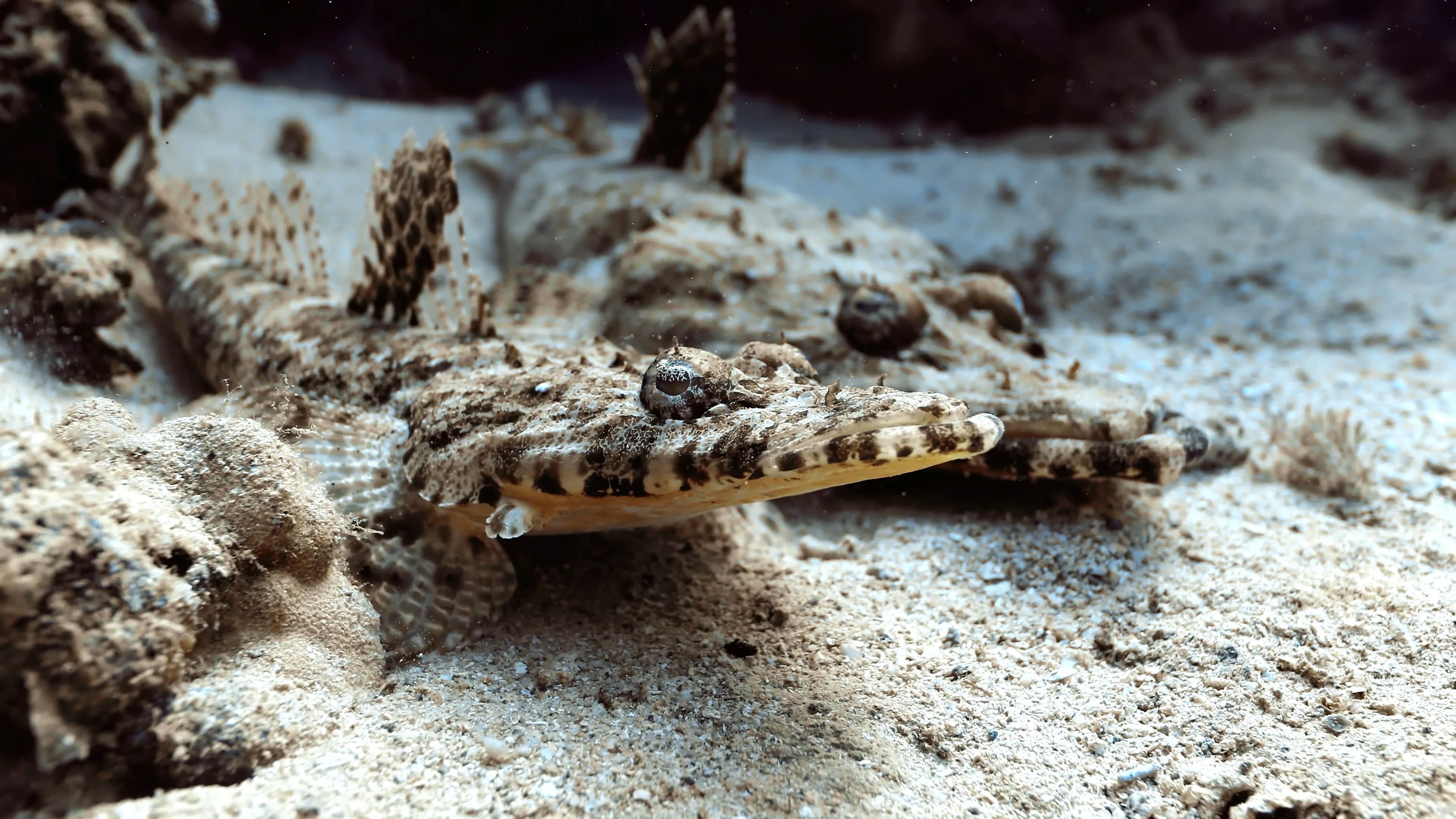
Raie plumetée, à plumet ou pastenague Sephen
Ma première rencontre avec une raie plumetée (Pastinachus Sephen) a fondamentalement changé ma vision des raies en général. Cette sensation indescriptible, de voir émerger des profondeurs une créature témoignant de centaines de millions d'années de vie sur terre m’a tout simplement bouleversée. Nous pouvons faire de nombreuses rencontres émouvantes dans les océans, mais peu d’entre elles sont comparables à celle-ci. Sachant que cette espèce se reproduit très lentement et est chassée pour sa peau (utilisée pour polir le bois, mais aussi comme source de galuchat pour les accessoires de mode ou le mobilier), sa population diminue à un rythme préoccupant.
Le dugong (aussi appelé "vache marine")
Même si nous le croisons régulièrement dans la baie lors de nos sorties en zodiac (il y en a 2 dans les environs), il est plus difficile de l’approcher en plongée. Ce mammifère marin est extrêmement timide et insaisissable lorsqu'il n’est pas en train de brouter dans les herbiers. Cependant, le mois de mai est une bonne période pour observer cette espèce en danger. Il faudra s’armer de patience. Il s’agit là encore d’une espèce en voie de disparition, mais des études récentes ont conclu que le nombre de dugongs commence à augmenter à nouveau dans la mer Rouge.



1. Bienvenue dans l'équipe!
Le cinéaste sous-marin Olivier Bourgeois,et Franck Meyer, expert en port production, vous révèlent tous les secrets de la photographie et de la vidéo sous-marine. Au cours de cet atelier, ils vous donnent des conseils, dévoilent leurs astuces et vous transmettent les connaissances qu’ils ont acquises sur différents projets de films ou reportages photos (National Geographic, Gaumont, France Télévisions...). Avec eux, vous pouvez constamment scruter par-dessus l’épaule de professionnels et vous laissez inspirer. Vous n’êtes ni un stagiaire ni un simple participant mais un membre à part entière de leur équipe.
2. L'hôtel
Nous logeons dans un agréable complexe hôtelier 4 étoiles. Les chambres (25 m²), toutes équipées d’une salle de bain privée et d’un joli balcon, sont situées à quelques mètres du centre de plongée qui nous accueillent lors de cet atelier. Les lits sont grands et confortables. Toutes les chambres disposent d'un réfrigérateur et, ce qui est essentiel, d'un grand bureau permettant de manipuler votre matériel de photographie et vidéo sous-marine : assembler, démonter, nettoyer, graisser les joints de votre boîtier, réassembler, ranger vos objectifs, installer votre chargeur de batterie, transférer les photos/vidéos prises durant la journée sur un disque dur ou directement sur votre ordinateur portable si vous en avez apporté un.
3. Une journée type
Nous commençons par un petit déjeuner (non obligatoire pour ceux qui ont besoin de plus de sommeil) suivi d’un briefing. Chaque journée se compose d’une partie « pratique », durant laquelle nous plongeons sur des spots magnifiques (2 à 3 fois par jour), et d’une partie « théorique », souvent après le déjeuner (qui ne dépasse jamais 2 heures par jour), durant laquelle nous analysons ensemble vos photos et vidéos sous-marines, nous discutons techniques de prise de vue et de réglages (qui est en fait très axée sur la pratique), et vous préparons aux spécificités de l’environnement marin local et des espèces. Après une journée bien remplie, et des images sous-marines plein les yeux, nous pouvons partager un verre en admirant un splendide coucher de soleil sur la Mer Rouge depuis le « Bar des Plongeurs » avant d’aller dîner.
• Combinaison recommandée : longue / 5 à 7 mm
Nous avons établi un programme de plongée qui nous laisse suffisamment de flexibilité si la météo est changeante. Dans la zone, il y a plus de 40 sites de plongée, ce qui nous donne le choix en fonction des conditions de mer, de la position du soleil aux différents moments de la journée et des marées. Nous nous déplaçons toujours ensemble (ou en petits groupes), comme une équipe de tournage sous-marins. Les zodiacs, speed boat ou minibus sont privatisés pour nous, de sorte que nous sommes la plupart du temps juste entre nous. De l'eau minérale, des comprimés d'électrolytes (pour l’hydratation) et de l'anti buée sont toujours disponibles.
5. L'Égypte en mai/juin
- • Visibilité : de 18 à 35 mètres
- • Température de l'eau : 22° à 24°
- • Température de l'air : de 21° (nuit) à 31° (jour)
- • Combinaison recommandée : longue / 5 à 7 mm
IMPORTANT : Les plongées se font en petit groupe de 2 à 4 personnes maximum, pour un accompagnement plus personnalisé et une meilleure approche de la vie marine. Les photographes et vidéastes sont répartis en groupes distincts.
6. À qui s'adresse l'atelier ?
Cet atelier s’adresse aux photographes et vidéastes sous-marins de niveau débutant, intermédiaire ou plus expérimenté cherchant à améliorer leurs images sous-marines. Si vous avez un nouvel appareil photo, un nouveau boîtier ou si vous débutez tout juste, ce workshop couvre toutes les bases. Si vous prenez des photos depuis un certain temps mais que vous souhaitez vraiment passer au niveau supérieur, cet atelier est fait pour vous. Vous n'êtes pas satisfait des résultats que vous obtenez ? Vous êtes intéressés par de nouvelles techniques pour mieux approcher la faune marine ? Ou mieux connaître les espèces que vous photographiez/filmez pour anticiper leurs comportements ? Vous trouverez toutes les réponses dans cet atelier.

